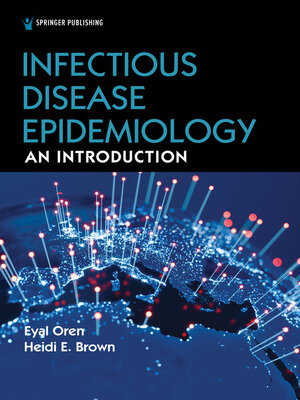
Sign up to save your library
With an OverDrive account, you can save your favorite libraries for at-a-glance information about availability. Find out more about OverDrive accounts.
Find this title in Libby, the library reading app by OverDrive.



Search for a digital library with this title
Title found at these libraries:
| Library Name | Distance |
|---|---|
| Loading... |
Infectious Disease Epidemiology: An Introduction is a foundational textbook for public health and related health science degrees. It provides a comprehensive public health strategy for understanding and managing the spread of infectious diseases. This unique book offers an integrated approach that covers the important methods underlying the discipline of infectious disease epidemiology, while also illustrating key social and environmental factors critical for understanding disease spread and its effect on population health.
The book is divided into four parts that cover the entire scope of infectious disease origin, spread, and management. It breaks down factors leading to disease emergence and modes of transmission, the social, behavioral, cultural, and environmental dimensions that contribute to communicable spread and severity, as well as the tools used for disease detection, surveillance, control, and eradication. It discusses the latest knowledge and technologies in the field—including specific coverage on the role of big data and digital disease detection, the impact and challenges of vaccines, and much more. Core epidemiologic principles are explored through rich real-world examples, utilizing a combination of case studies, popular media examples, and didactic exercises. Each chapter has an engaging narrative and includes key terms and definitions, insightful vignettes, visually compelling illustrations, thought questions, and discussion questions to foster critical thinking and spark further investigation.
Infectious Disease Epidemiology: An Introduction is an essential resource for students of public health and other health professionals in developing a nuanced and comprehensive understanding of this growing and dynamic field.
Key Features:







